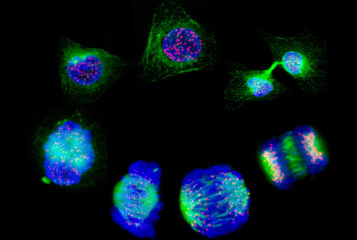A new genetic test screening for almost 450 rare childhood genetic diseases could be available in the US this year, reports the Beyond Batten Disease Foundation (BBDF). The test sprays genomes with genetic sequences to identify mutations in genes, such as those causing Batten and other childhood genetic diseases. Preconception screening, along with genetic counselling of carriers, has seen a decline in the number of severe recessive diseases, such as cystic fibrosis. However, extension of such screening to more severe disease genes has up to now been impractical.
The new test, due to become available towards the end of 2011, also benefits from being cheaper than separate tests currently offered for any one of the 450 diseases it can screen for.
Researchers at the National Centre for Genome Resources, New Mexico, (NCGR) carried out a preconception carrier screen for 448 inherited childhood diseases. Instead of expensive and time-consuming complete human genome sequencing, 7,717 regions from 437 target genes were enriched by hybrid capture or microdroplet PCR (polymerase chain reaction).
Results demonstrated mutation detection/genotyping had around 95 percent sensitivity and almost 100 percent specificity for substitution, insertion/deletion, splicing, and gross deletion mutations and SNPs (single nucleotide polymorphisms). Researchers also discovered potential harmful mutations which had until then been previously uncharacterised.
'This represents an important milestone in reducing the number of children and families affected by these devastating illnesses', said Dr Stephen Kingsmore, Chief Scientific Officer of the NCGR.
Despite being individually uncommon, critical genetic childhood diseases make up around 20 percent of all infant deaths and ten percent of all paediatric hospitalisations. Similar screening methods have been applied to Tay-Sachs Disease detection which saw a 90 percent reduction in occurrences among the target population.
The findings were published in Science Translational Medicine.





Leave a Reply
You must be logged in to post a comment.